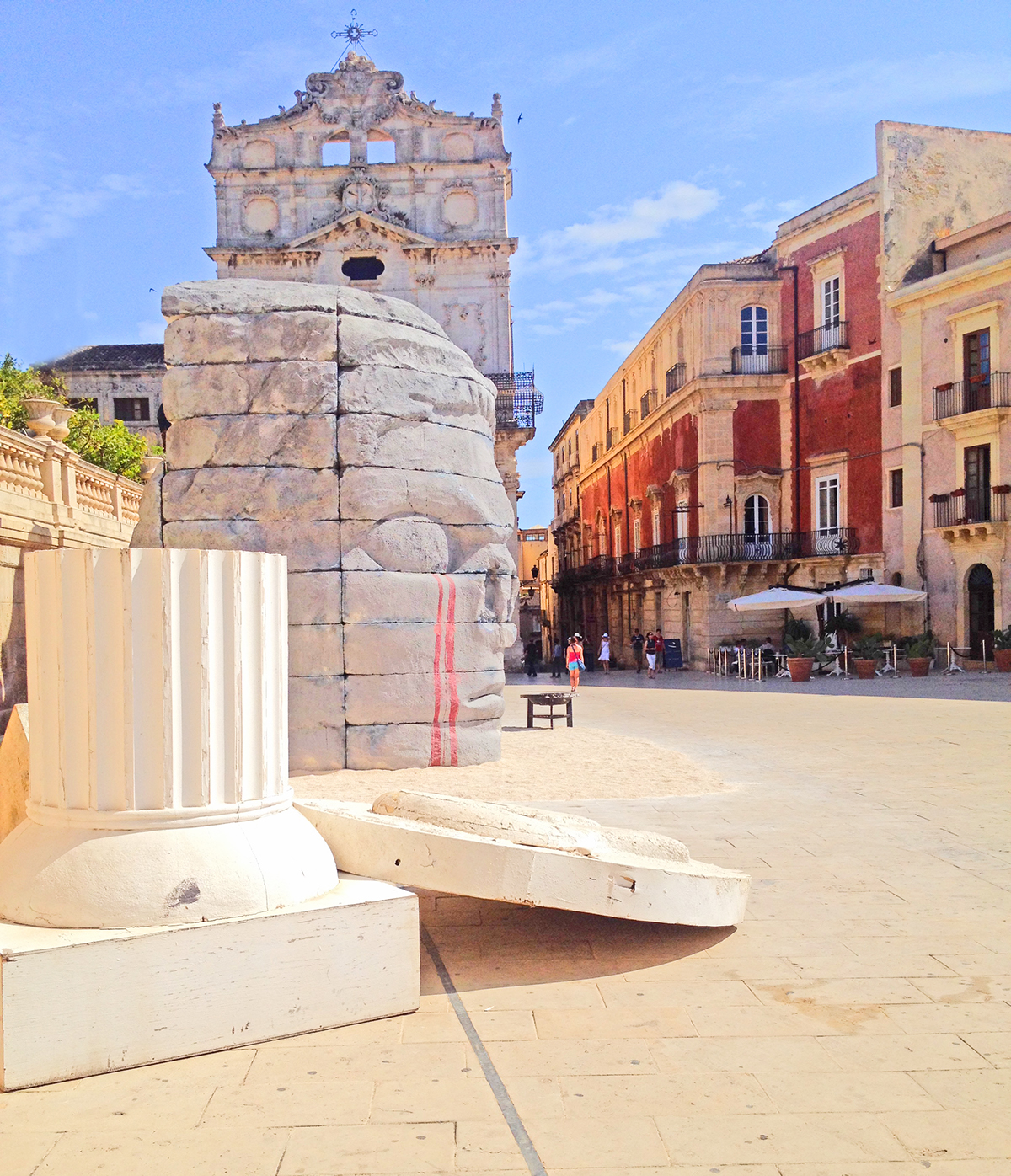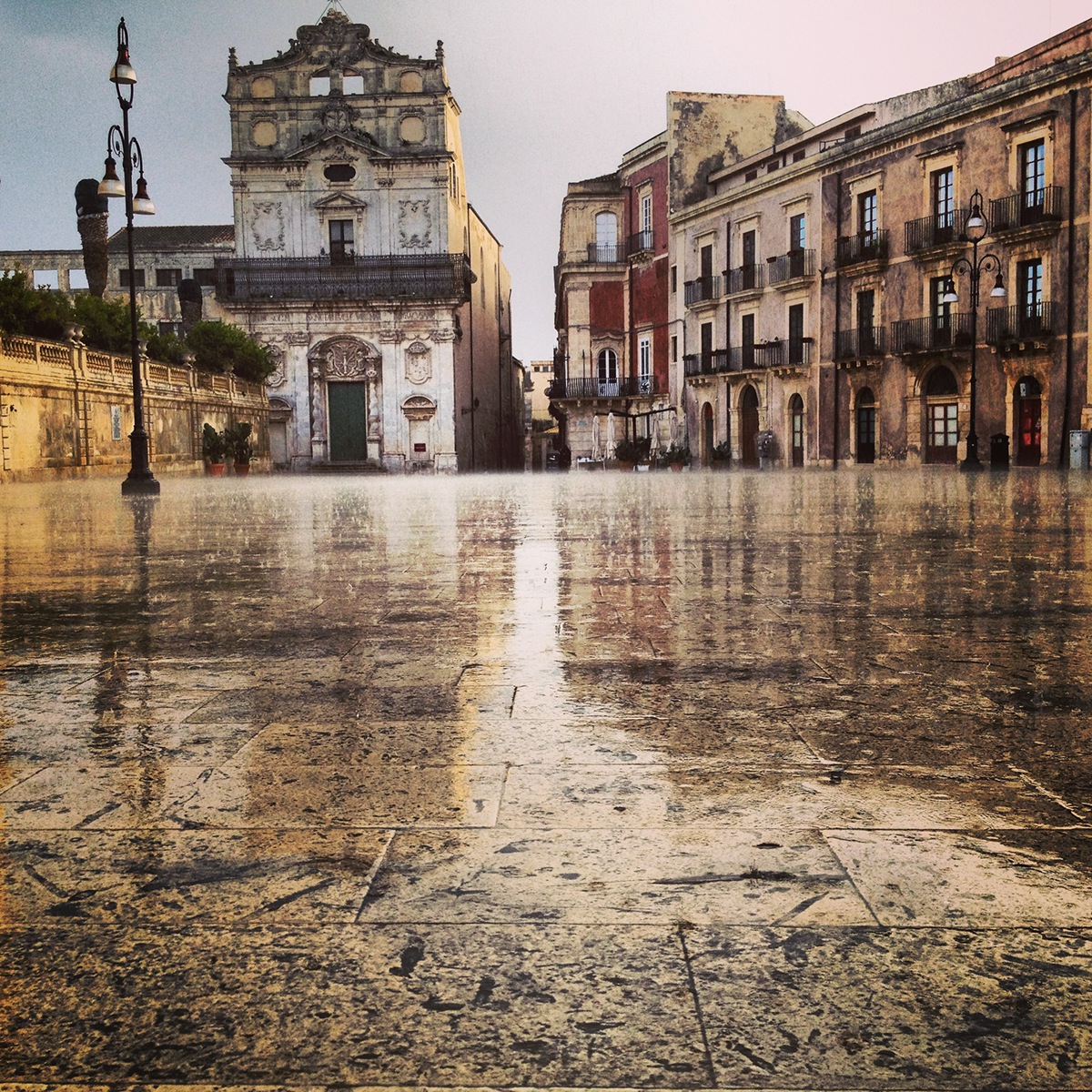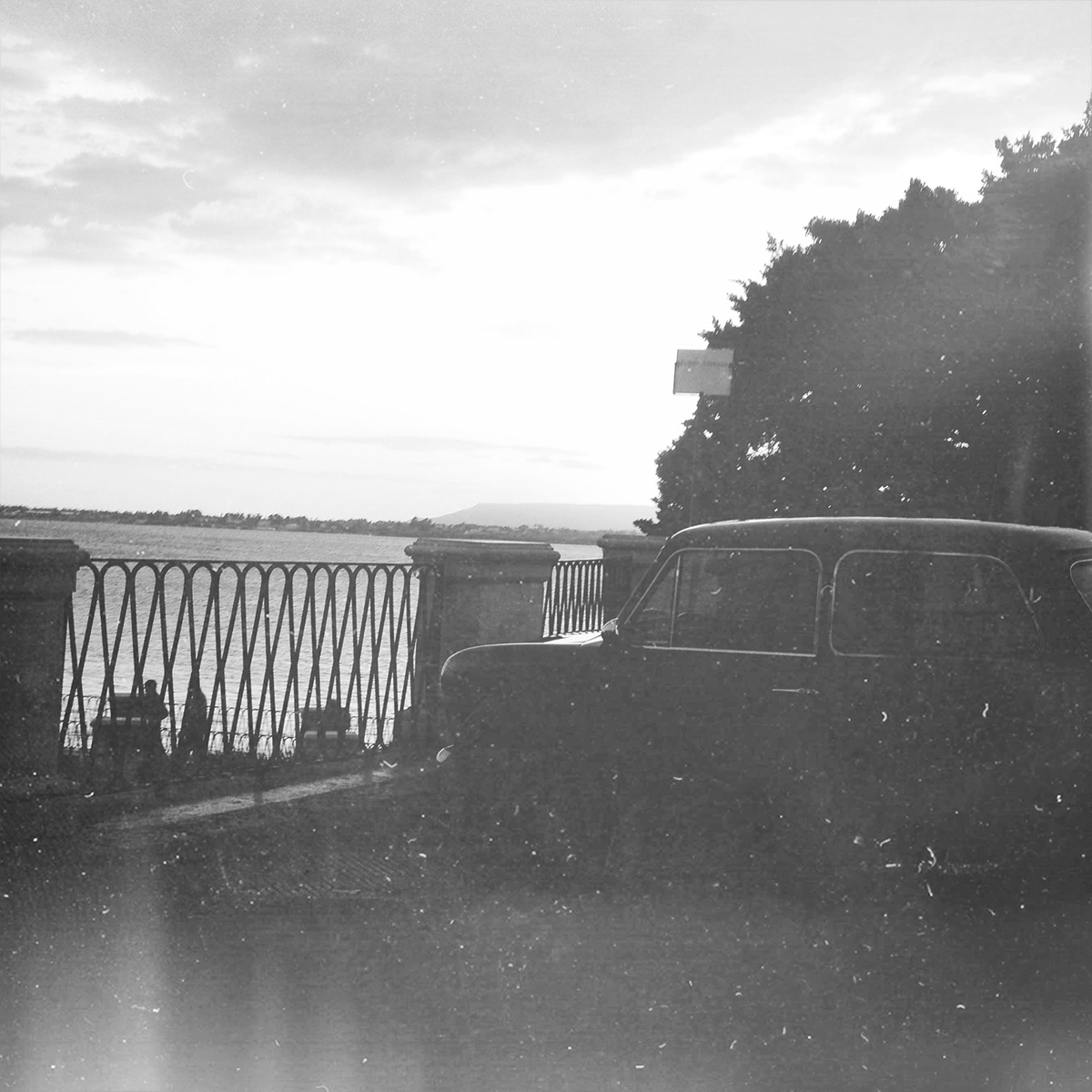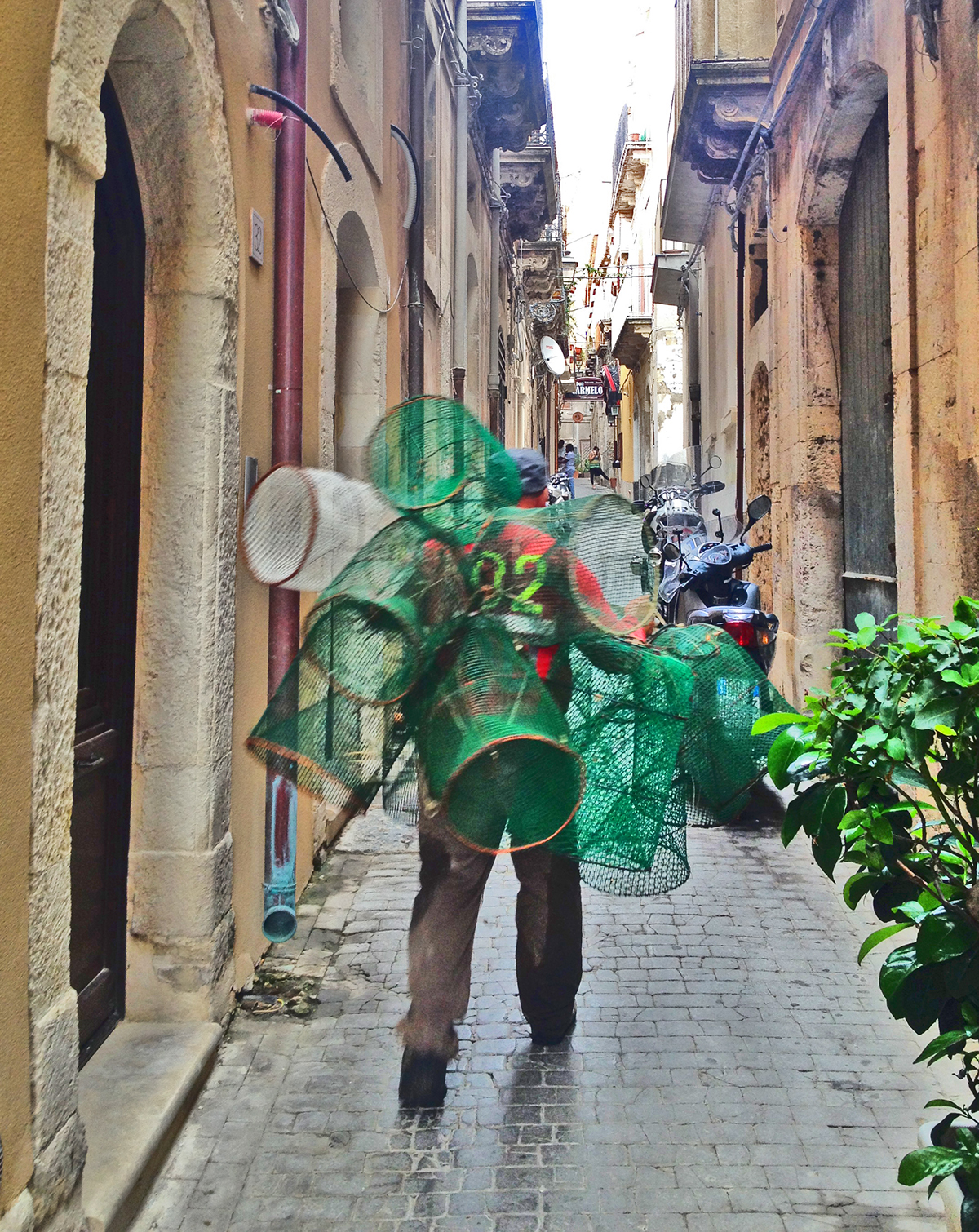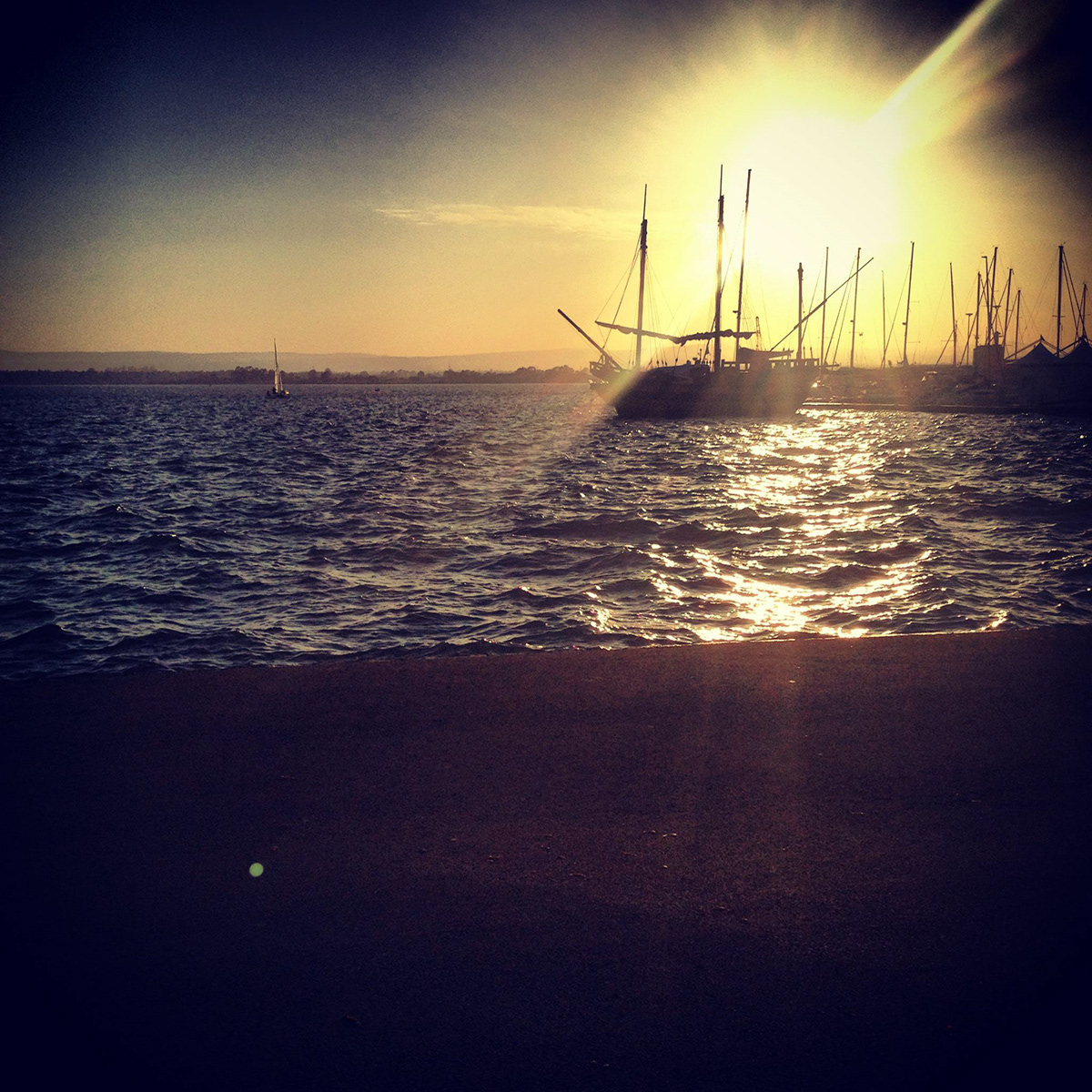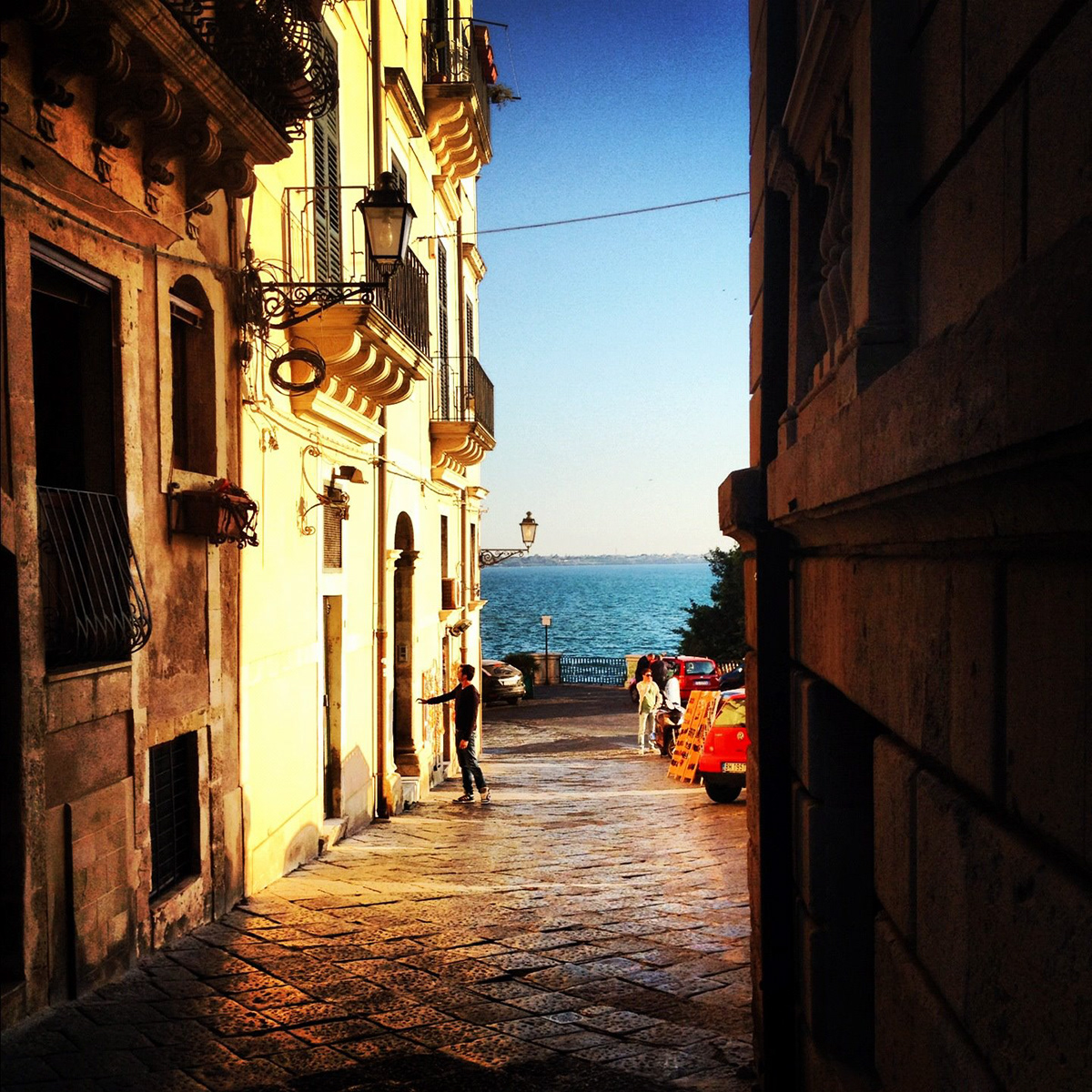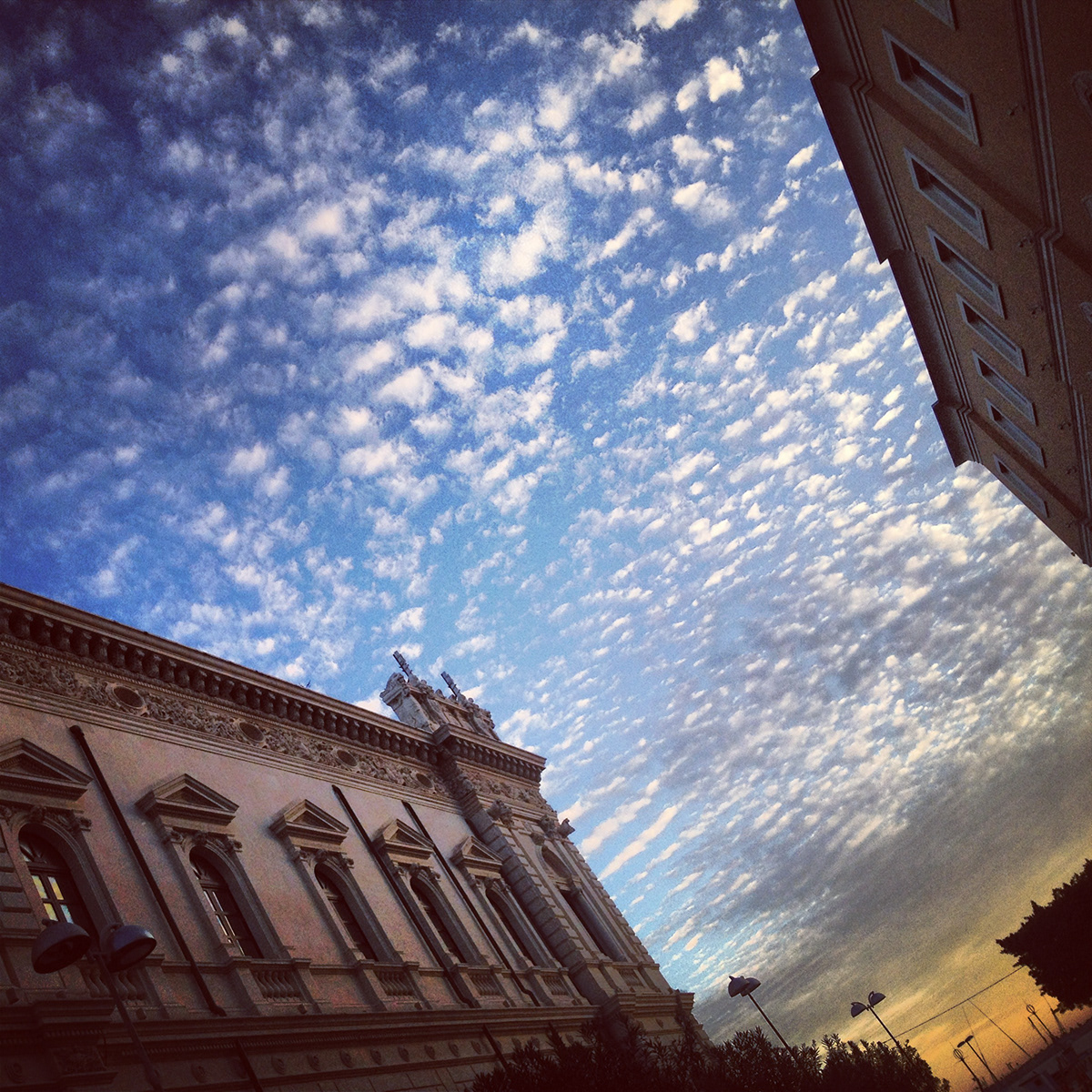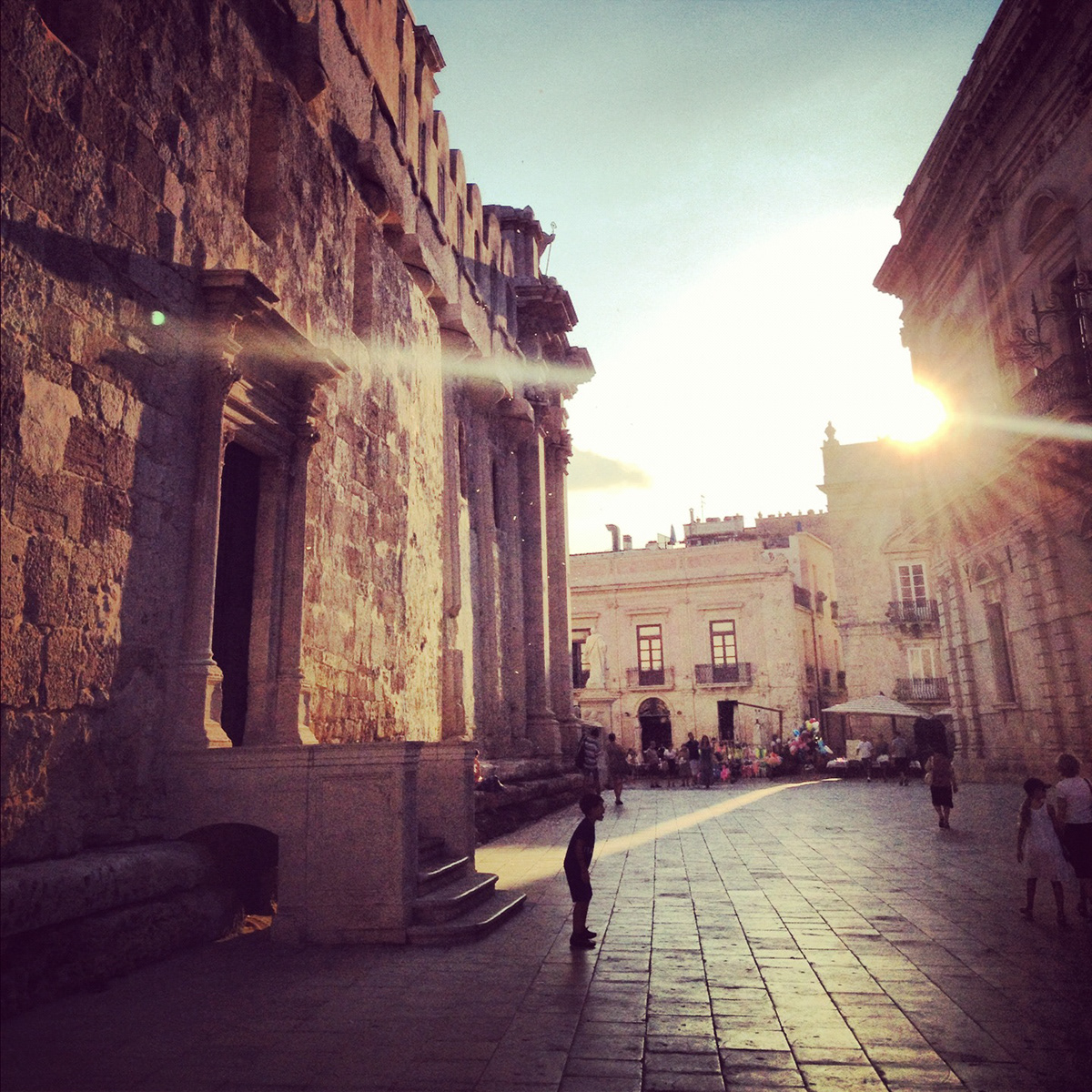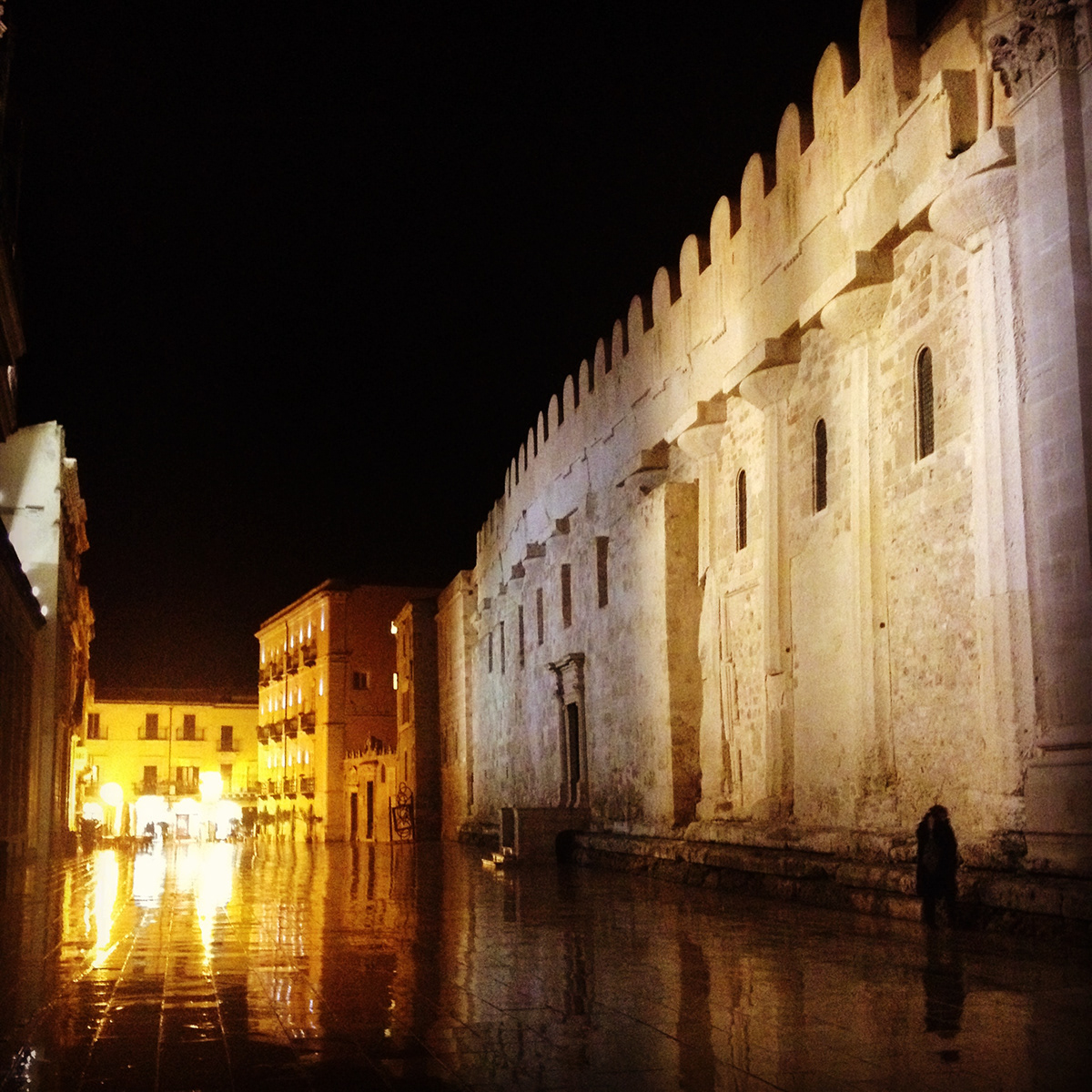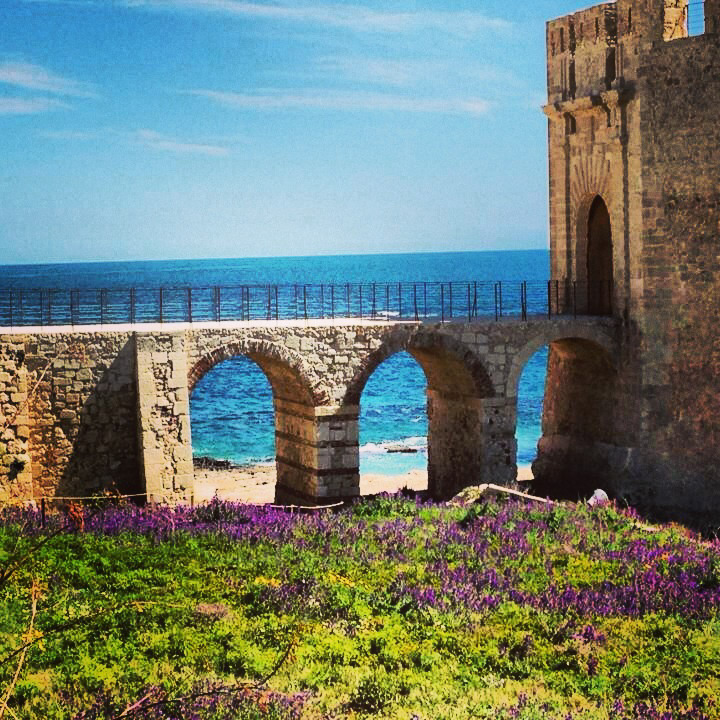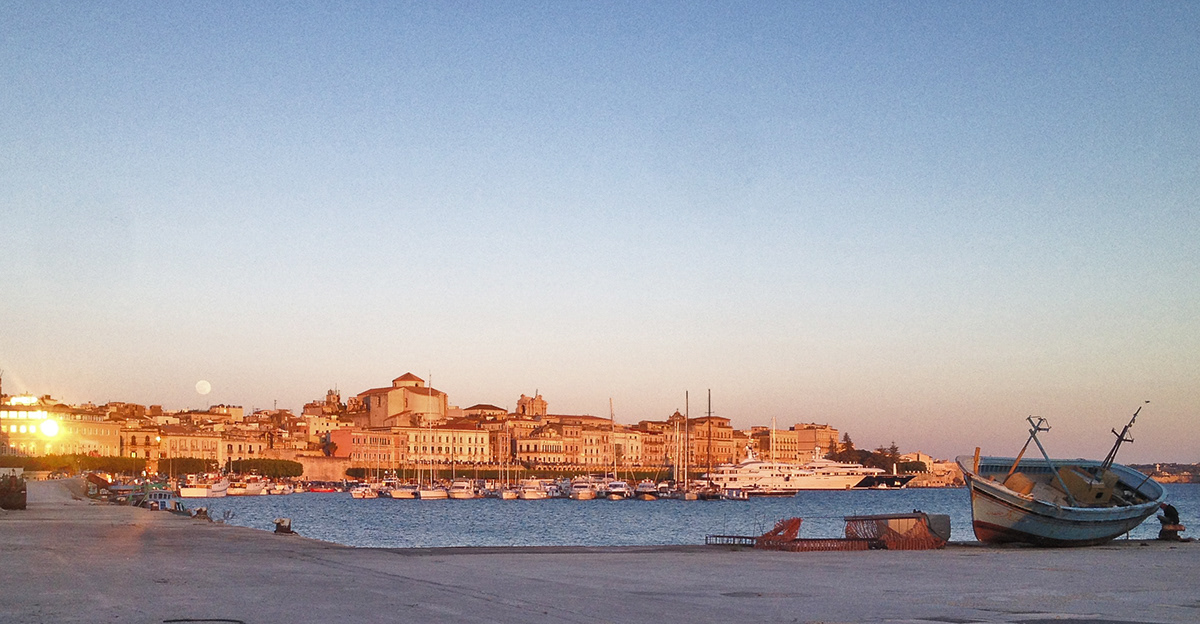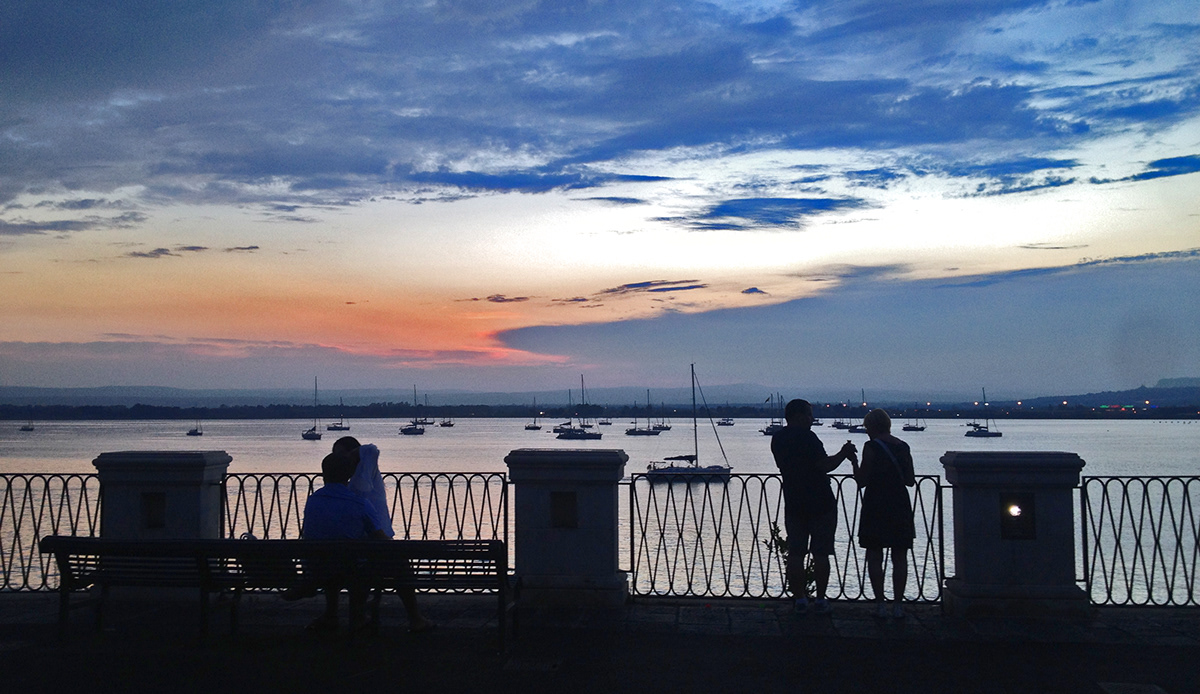Ortigia Island
Syracuse, Sicily.
Syracuse, Sicily.
Le origini di Siracusa si perdono nelle nebbie del tempo, ma si fanno risalire intorno al 735-734 a.C.
La città fu fondata da un gruppo di esiliati greci, guidati dal corinzio Archia.
Il nome Siracusa sembra derivare dal siculo Syraka (abbondanza d'acqua), per la presenza di molti corsi d'acqua e di una zona paludosa
La fama di Siracusa è legata alla sua storia greca, quando la polis comandava sui mari insidiando la potenza di cartaginesi e romani fino a diventare il primo grande impero d'occidente.
Di quell'epoca restano molte testimonianze, come la famosissima Fonte Aretusa, una fonte d'acqua dolce nel cuore di Ortigia, legata al mito di Aretusa e Alfeo celebrato da tanti poeti e scrittori.
La città fu fondata da un gruppo di esiliati greci, guidati dal corinzio Archia.
Il nome Siracusa sembra derivare dal siculo Syraka (abbondanza d'acqua), per la presenza di molti corsi d'acqua e di una zona paludosa
La fama di Siracusa è legata alla sua storia greca, quando la polis comandava sui mari insidiando la potenza di cartaginesi e romani fino a diventare il primo grande impero d'occidente.
Di quell'epoca restano molte testimonianze, come la famosissima Fonte Aretusa, una fonte d'acqua dolce nel cuore di Ortigia, legata al mito di Aretusa e Alfeo celebrato da tanti poeti e scrittori.
A mix of Greek, Roman, Arabic and Baroque architecture can be found in the vibrant open-air market at the center of this 2,700-year-old Sicilian city.
Each winding alley has a particular beauty and there's so much to see, from Apollo's temple and the magnificent Piazza del Duomo to the eerie catacombs that are second only to Rome's.
The city's archeological park features one of the greatest Greek theaters and a Roman arena once used for gladiator fights.
The most spectacular attraction is an immense botanic garden featuring dozens of caves from which limestone was extracted to build the city.
Around 8,000 Athenian slaves died in these caves after years of forced labor -- it's said that the caves still echo the prisoners' laments.
One of these is the Ear of Dionysius, a 30-meters high rock cavern. Legend has it that this is where the tyrant Dionysius jailed his enemies and could hear what they were conspiring through a side room.
